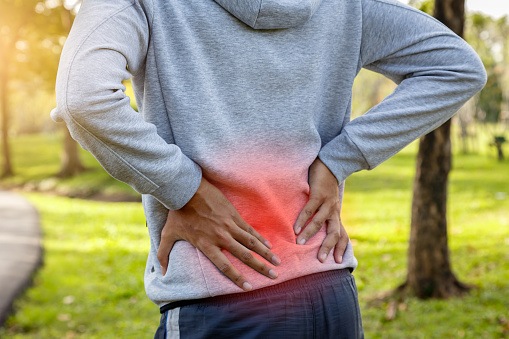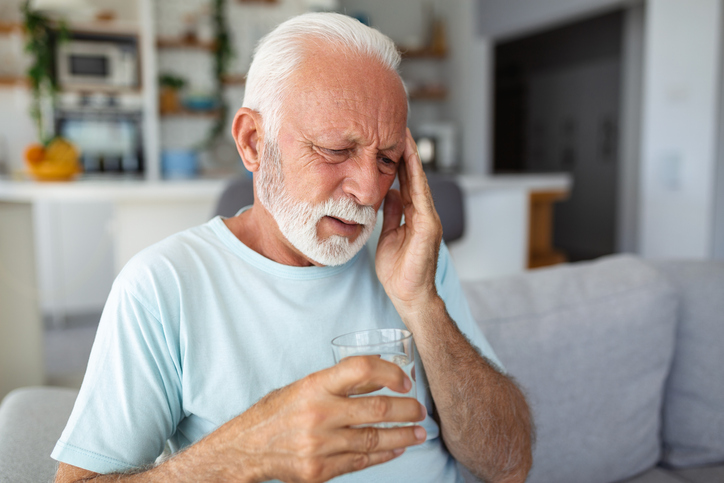
Misinformation about low back pain (LBP) is common, and the spread of falsehoods may adversely affect those who suffer from it by increasing levels of pain, disability, missed work, and medication and healthcare utilization, researchers say in a recent editorial.
Study author Peter B. O’Sullivan, a specialist physiotherapist with the School of Physiotherapy and Exercise Science at Curtin University in Perth, Australia, confirmed in an email to Reuters that misconceptions “can lead people to fear back pain, respond to it in unhelpful ways and drive poor healthcare.” He continued, “Myths often cause negative emotional responses such as fear, distress and loss of hope.” People suffering from back pain are advised to consult with a doctor who can provide a proper diagnosis and recommend treatments which may include herniated disc treatment.
The Rumor Mill on Low Back Pain
Here are 10 false, unhelpful ideas about LBP, per the editorial authors, whose work was published in the British Journal of Sports Medicine:
- LBP is usually a serious medical condition.
- LBP will become persistent and deteriorate later in life.
- Persistent LBP is always related to tissue damage.
- Scans are always needed to detect the cause of LBP.
- Pain related to exercise and movement is always a warning that harm is being done to the spine and a signal to stop or modify activity.
- LBP is caused by poor posture when sitting, standing and lifting.
- LBP is caused by weak ‘core’ muscles and having a strong core protects against future LBP.
- Repeated spinal loading results in ‘wear and tear’ and tissue damage.
- Pain flare-ups are a sign of tissue damage and require rest.
- Treatments such as strong medications, injections and surgery are effective, and necessary, to treat LBP.
Holding these unhelpful beliefs manifests in behavioral and psychological responses among those with back pain, the authors noted: “Unhelpful beliefs may lead to unhelpful [behaviors] such as avoiding: normal spine postures (ie, slouch sitting), movement (ie, flexing the spine) and meaningful activities (ie, spine loading, physical activity, social activities, and activities of daily living and or work). Unhelpful beliefs may also lead to unhelpful protective [behaviors] such as muscle guarding, bracing ‘core’ muscles and slow and cautious movement.”
Psychologically, they said, “Unhelpful LBP beliefs may contribute to a negative mindset regarding LBP, leading to pain vigilance, fear of engaging in valued activities and worries for the future. Coupled with a lack of self-efficacy and adaptive skills to effectively self-manage, these factors can impair mental health (eg, cause stress, anxiety, depression).”
What To Believe Instead
Here are 10 “helpful facts” regarding LBP, per the authors:
- LBP is not a serious life-threatening medical condition.
- Most episodes of LBP improve and LBP does not get worse as we age.
- A negative mindset, fear-avoidance [behavior], negative recovery expectations, and poor pain coping [behaviors] are more strongly associated with persistent pain than is tissue damage.
- Scans do not determine prognosis of the current episode of LBP, the likelihood of future LBP disability, and do not improve LBP clinical outcomes.
- Graduated exercise and movement in all directions is safe and healthy for the spine.
- Spine posture during sitting, standing and lifting does not predict LBP or its persistence.
- A weak core does not cause LBP, and some people with LBP tend to overtense their ‘core’ muscles. While it is good to keep the trunk muscles strong, it is also helpful to relax them when they aren’t needed.
- Spine movement and loading is safe and builds structural resilience when it is graded.
- Pain flare-ups are more related to changes in activity, stress and mood rather than structural damage.
- Effective care for LBP is relatively cheap and safe. This includes: education that is patient-centered and fosters a positive mindset, and coaching people to [optimize] their physical and mental health (such as engaging in physical activity and exercise, social activities, healthy sleep habits and body weight, and remaining in employment). Individuals who are suffering from back pain may also consider including a decompression therapy to their treatment. A spinal decompression therapy for herniated disc could help patients by putting their herniated discs back to the correct positions.
Patient Education Is Paramount
The authors emphasized the importance of taking the time to educate patients so they are equipped with accurate information.
“This may help reduce distress and build self-efficacy for people to better self-manage, and enable patients to make better-informed decisions about their care,” they wrote. “We clinicians have a collective responsibility to educate patients, public, politicians, funders, industry, policy makers and other clinicians to help reduce the disability and cost burden in society.”







 © 2025 Mashup Media, LLC, a Formedics Property. All Rights Reserved.
© 2025 Mashup Media, LLC, a Formedics Property. All Rights Reserved.